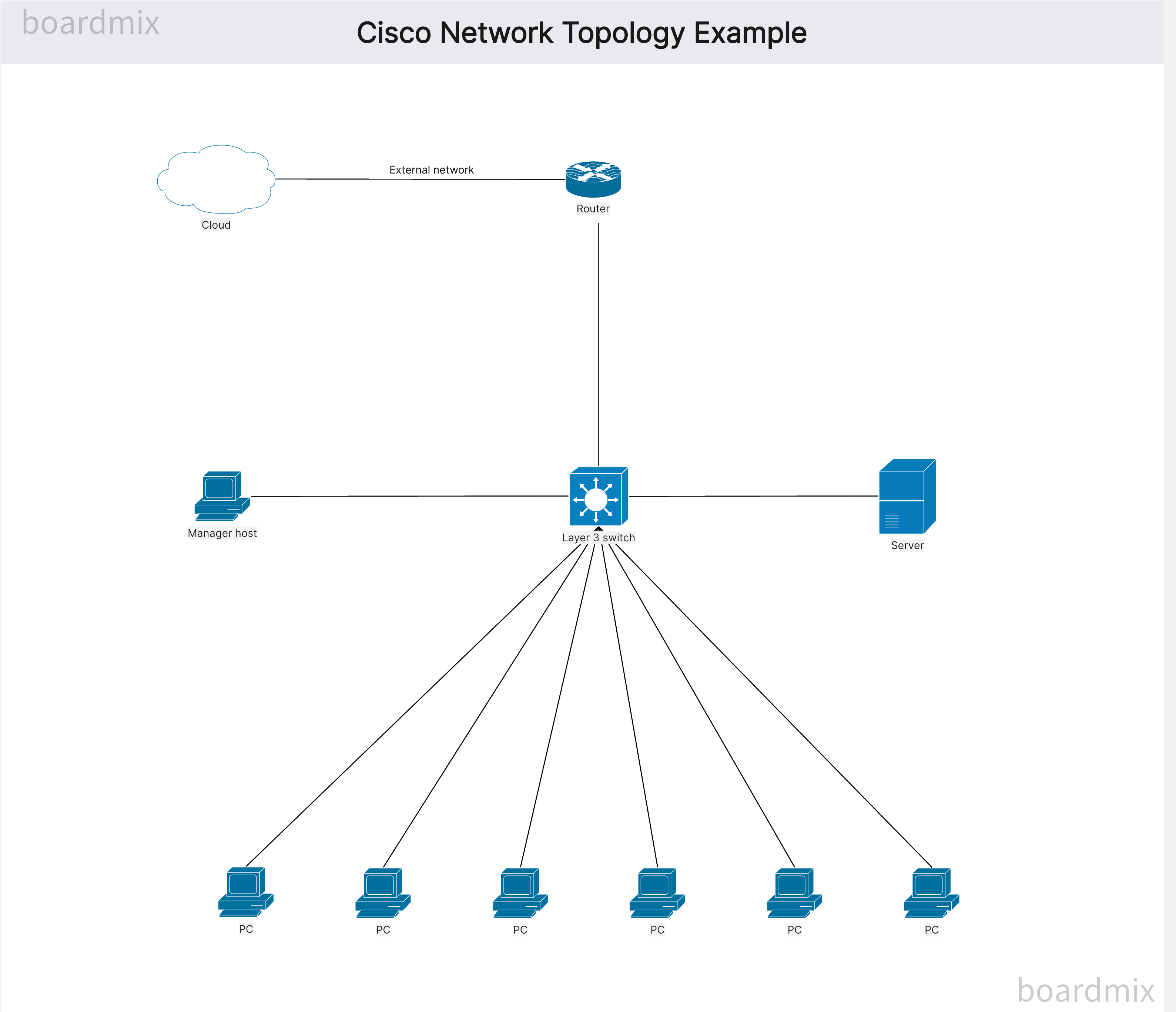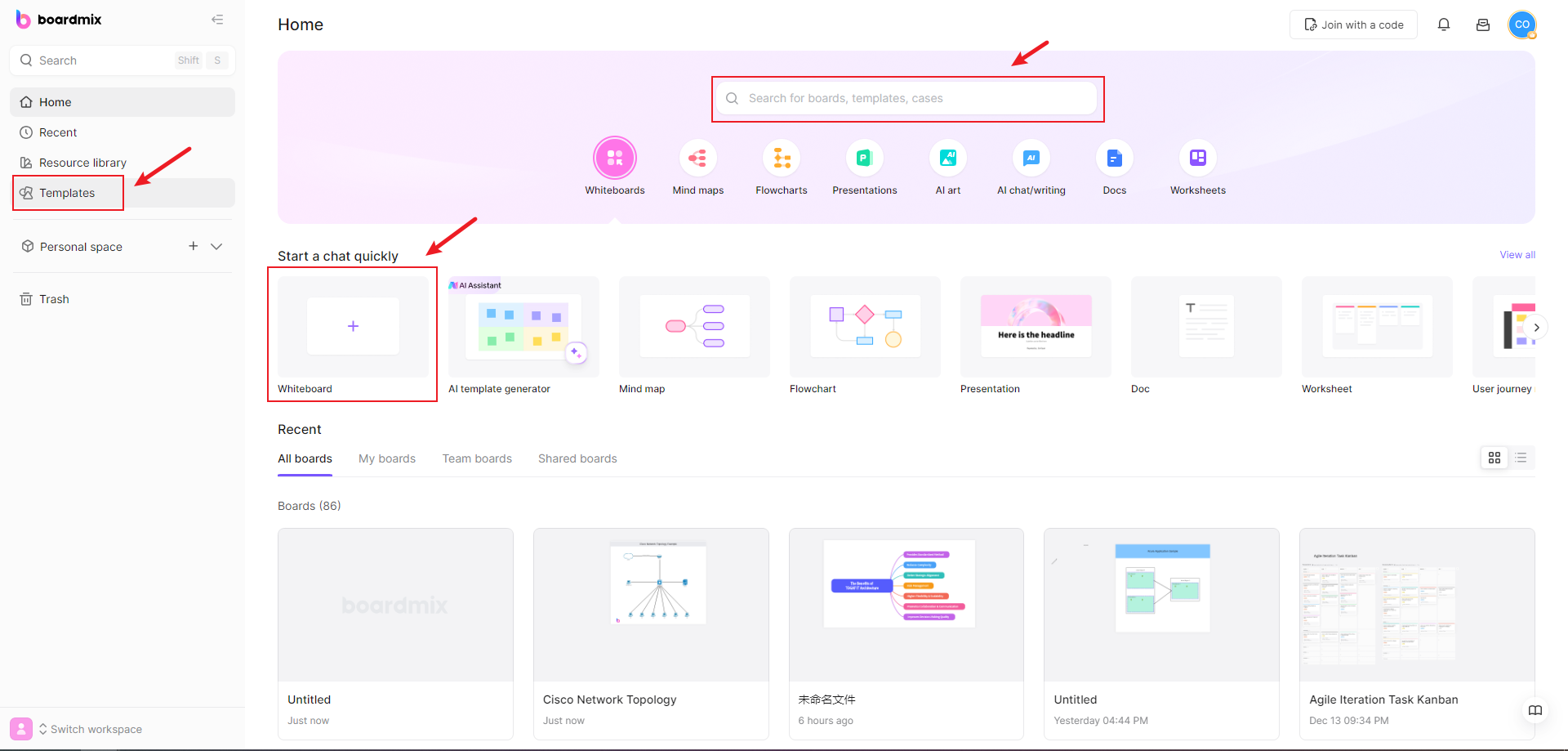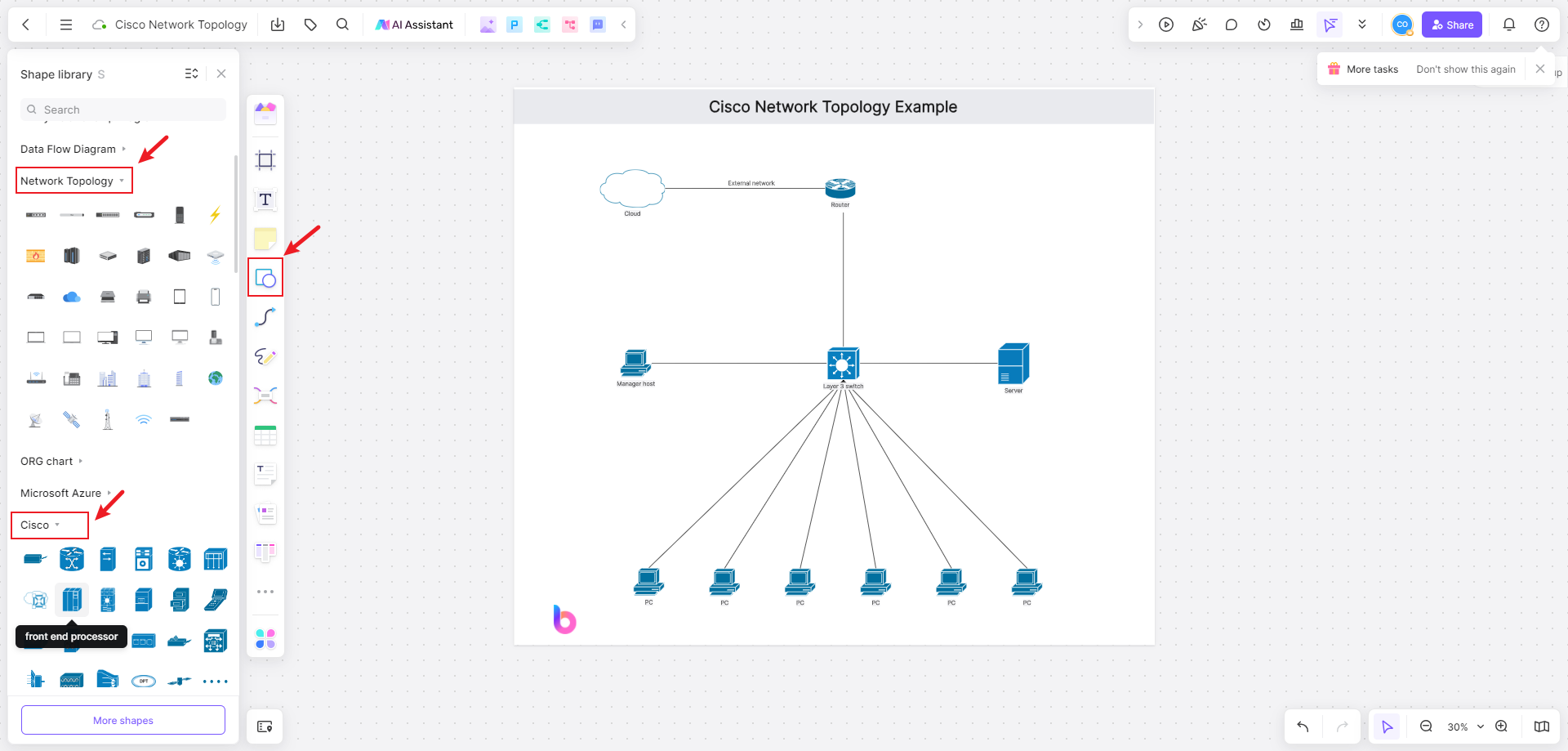Designing a Cisco Network Topology can often feel like drafting a blueprint for a complex architectural project. It's about meticulously planning the interconnections between various network devices and systems, forming a robust and efficient network infrastructure. But this isn't just about sketching lines and nodes. It's about building a network that is scalable, resilient, and perfectly aligned with your business needs. So, how do you draft this blueprint? What are the key considerations in designing a Cisco Network Topology? And most importantly, how can mastering this design process pave the way for successful network management? Let's delve into these questions together, exploring the art of designing Cisco Network Topologies and their potential to shape future-proof network infrastructures.
What is Cisco Network Topology Design?
Cisco Network Topology Design refers to the process of creating a layout or blueprint for a Cisco network. It involves planning and organizing the various components of a network, such as routers, switches, firewalls, and servers, in a way that optimizes performance, scalability, and security. The goal of Cisco Network Topology Design is to create a network architecture that meets the specific needs of an organization. This includes determining the number and placement of devices, the types of connections between them, and the overall structure of the network.

What to look for in Cisco Network Topology Design?
When looking for a Cisco Network Topology Design, there are several key factors to consider.
- Scalability: A good network topology design should be able to accommodate future growth and changes in technology. It should be flexible enough to add new devices, expand the network to new locations, and support increasing bandwidth demands.
- Performance: The network topology should be designed to ensure optimal performance. This includes minimizing latency, optimizing data transfer speeds, and providing sufficient bandwidth for critical applications.
- Security: Network security is crucial in any network design. The topology should include measures to protect the network from unauthorized access, data breaches, and other security threats. This may involve using firewalls, intrusion detection systems, encryption, and access control mechanisms.
- Reliability: The network should be designed with redundancy and resilience in mind. This includes implementing backup systems, redundant links, and failover mechanisms to minimize downtime and ensure continuity of operations.
- Ease of Management: The network topology should be easy to manage and maintain. It should be well-organized, with clear documentation and proper labeling of devices and connections. This makes it easier for network administrators to troubleshoot issues and make changes when needed.
- Cost-Effectiveness: While designing a network topology, it is important to consider the cost implications. The design should be efficient and cost-effective, considering factors such as the cost of devices, maintenance, and ongoing operational expenses.
- Network Requirements: Understanding the requirements of the organization is crucial in designing an effective network topology. This includes factors such as the number of users, the types of applications and services running on the network, and the expected growth of the organization.
- Redundancy and Resilience: Building redundancy into the network topology helps ensure high availability and resilience. This includes implementing backup systems, redundant links, and failover mechanisms to minimize downtime and ensure continuity of operations.
By considering these factors, organizations can create a Cisco Network Topology Design that meets their organization's specific needs and objectives in terms of scalability, performance, security, reliability, ease of management, and cost-effectiveness.
How to Optimize Management Strategy Through Cisco Network Topology
Cisco network topology can serve as an effective tool to support and optimize your management strategy. It can provide better visualization to help you understand, monitor, and optimize network performance. Here are several ways to leverage Cisco network topology to optimize management strategies.
1. Formulate a Clear Network Design Plan
Firstly, by formulating a detailed network design plan, including the arrangement of devices, connection methods, and configuration settings, managers can understand the architecture of the entire network and make corresponding management decisions. In addition, a well-designed network topology can handle data traffic more effectively, improving the performance and stability of the network.
2. Deploy Appropriate Network Management Tools
Cisco provides a series of powerful network management tools such as Cisco Network Assistant and Cisco Packet Tracer which can help you monitor and manage network devices more effectively. For example, Cisco Network Assistant can provide administrators with a unified view to monitor the status of the network including device status, performance metrics, alerts, etc.
3. Optimize Network Security Measures
By utilizing Cisco's security products such as firewalls and intrusion detection systems etc., you can enhance the security level of your network. Combined with appropriate network topology design like dividing different network areas to isolate key systems and data further strengthens defenses against potential threats.
4. Enhance Business Adaptability
Network topologies should be designed and adjusted according to business needs. For instance, if a certain department requires greater bandwidth or higher data security levels then you may need to adjust your network architecture accordingly to meet these demands; in this way through leveraging on your networks’ topography businesses could better adapt towards changing business requirements.
5. Regular Reviewing & Updating
Similar to any IT asset regular reviewing along with updating is necessary for your networks’ topography; this includes not only maintenance along with updating hardware devices but also optimization concerning your networks’ design; for instance, alongside the emergence of new tech plus requirements, you might require introducing new devices or altering connectivity methods among devices.
Through effectively utilizing 'Cisco’s' networks’ topography one could optimize their management strategy enhancing both networks’ performance plus safety thereby supporting business development.
How to Design Cisco Network Topology?
Designing a Cisco network topology is an important task that requires consideration of multiple factors, including business needs, network performance, security, and scalability. Here are the steps and suggestions for designing a Cisco network topology:
1. Determine Network Requirements
Firstly, you need to understand and clarify your network requirements, including bandwidth, latency, security, redundancy, and disaster recovery. In addition, you also need to consider your type of business and scale as well as expected business growth and changes.
2. Choose Appropriate Network Devices and Technologies
Based on the network requirements, choose suitable Cisco network devices and technologies such as routers, switches, firewalls wireless access points, etc. When selecting devices one should consider their performance capabilities functionality reliability plus cost.
3. Design Network Topology Structure
Using network design tools like 'Cisco Packet Tracer', design the physical and logical topology structure of the network based on business needs and selected devices. Typical topology structures include star-shaped rings bus-type grid-type etc.
4. Configure Network Devices
Configure the network devices according to the designed network topology which includes interface configuration routing protocol configuration VLAN division firewall rule settings etc., during this process ensure that configurations comply with best practices plus safety standards.
5. Test And Optimize The Network
After completing the design conduct exhaustive testing on the networks which includes performance testing security testing fault recovery testing etc., test results could be used for optimizing networks' configurations improving networks' performances plus reliability.
Designing a Cisco network topology is a systematic project requiring a deep understanding of business needs plus networking technology along with scientific methods for planning plus designing.
Boardmix: Design Cisco Network Topology Diagram Online with Template
In today's digital age, the network has become a key link in enterprise operations. Therefore, Cisco network topology design has become increasingly important, not only can it help enterprises create efficient, secure and reliable IT infrastructure, but also provide support for network management, maintenance and optimization. Below we will guide you on how to use Boardmix online design tools and templates to carry out Cisco network topology design.
1. Preparation Before Starting
Firstly, you need to open the Boardmix website in your browser and create an account. If you don't have an account, register with your email.

2. Choose the Cisco Network Topology Diagram Template
Boardmix provides a variety of preset network topology templates, including those specifically designed for Cisco networks. Create a new board or click the Template and search for Cisco network. You just need to choose a template that suits your needs from the provided template library as a starting point.

3. Customize Your Network Topology
Once you have chosen a template, you can start creating your network topology diagram. Boardmix allows you to add, delete, or modify elements such as network devices, connection lines text, etc. Each type of element can be adjusted on the canvas by dragging and dropping.

4. Explore Cisco Symbol Library
Boardmix has a built-in Cisco symbol library which contains standard icons for Cisco routers, switches, firewalls, etc., devices. You can directly drag these icons into your network topology diagram and further configure them by clicking with the mouse.
![]()
5. Save and Share Your Design
After completing your network topology design you can choose to "Save" or save the design to Boardmix cloud; if you wish to share your design with team members you could also choose the "Share" option sending it via email or link.

With Boardmix online design tools along with templates one could more easily carry out Cisco’s network topography designs; regardless of whether you are a beginner at designing networks or an experienced expert 'Boardmix' could offer a potent plus intuitive designing experience.













